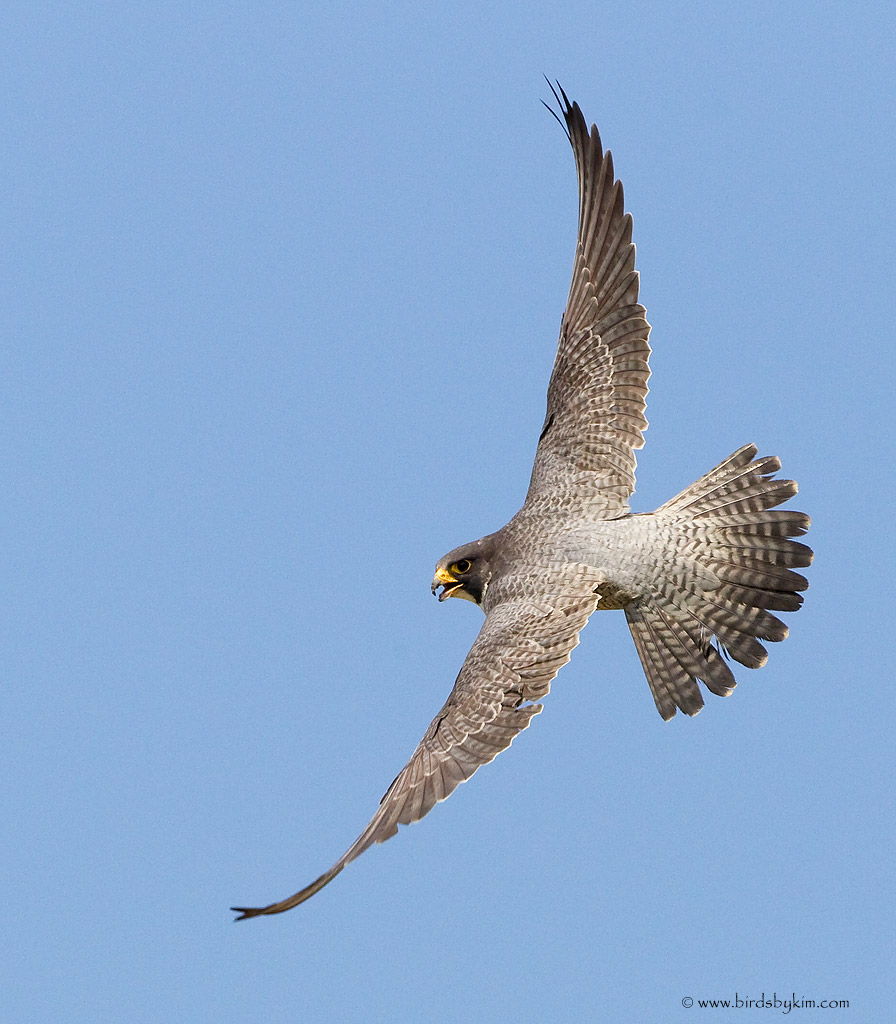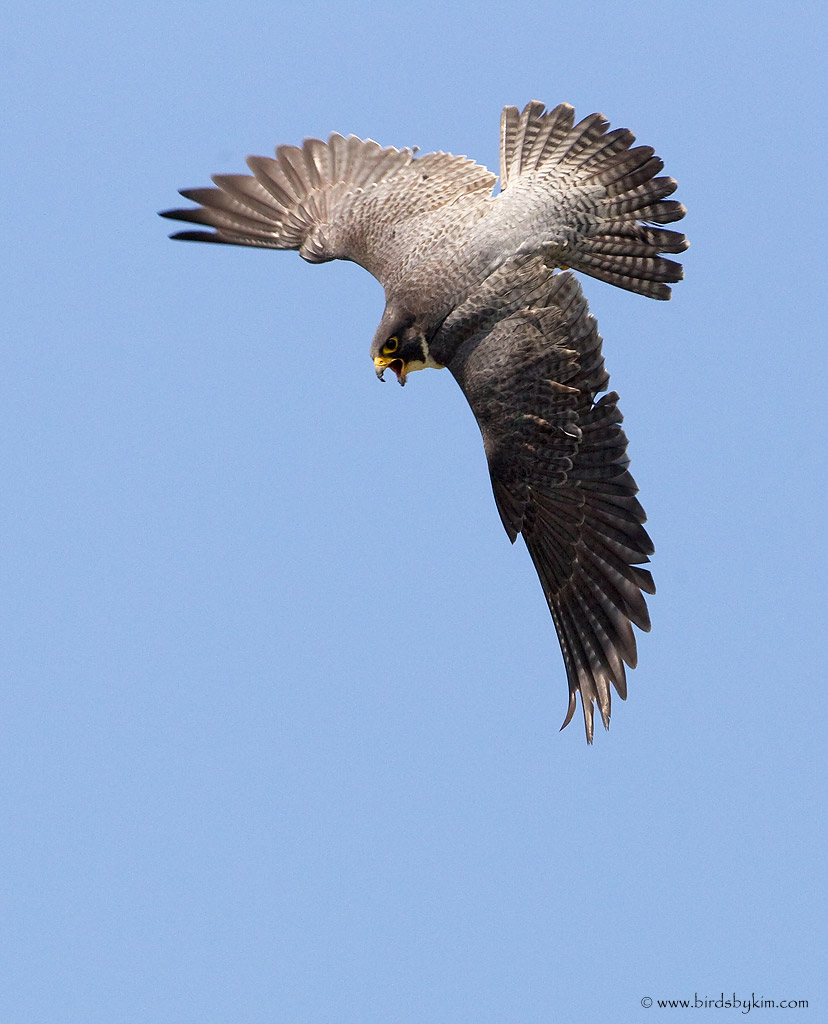Capturing peregrines in flight
Photos from the field while monitoring peregrines
By Ben Wurst, Habitat Program Manager
The subject of peregrine falcons have hijacked this blog! On Friday, I visited a nest at Forsythe NWR to medicate the young for prevention of trichomonas, an avian disease carried by pigeons and doves. Adult peregrines can transfer it to their young and if not treated can kill them. Kim Steininger, a renowned and award-winning bird photographer joined me and got some amazing photos! While I was up on the nesting tower, Kim was stationed behind her camera, which was wielding a powerful lens to capture these amazing photos of the adult peregrines in flight while I checked on the nestlings.

This was my third visit to this particular nest. I can attest to the strong parental bond of this female to her young. During my first visit (5/21) she hit me while I was attempting to look for a parasitic fly that has caused hatchlings to die in previous years. The young were about 2-3 days old and were very vulnerable, so the aggressive nature is understood.

Peregrines and other birds of prey, like eagles, owls, ospreys, and hawks see humans as predators. This is because they don’t have any other predators in the wild. This is also why disturbance is a major issue during the nesting season. When an adult leaves the nest; its young are unprotected. They are susceptible to predators like gulls and crows. Never approach a nest and only view from established viewing locations!

On the second visit (5/24) the female landed on the nesting tower, not more than 5 feet away from me! In the nest 2 weeks the young will be banded with federal USGS bird bands and state bi-color bands for future identification.

Thanks to Kim for allowing us to post her amazing images! Check out her website for more incredible images!